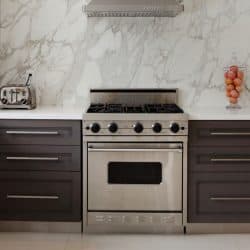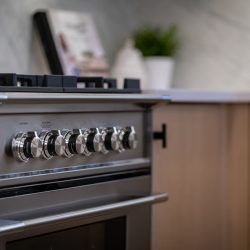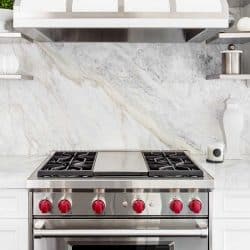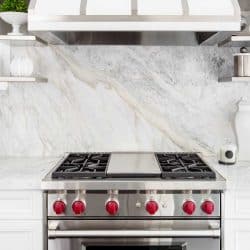Whether you're in the market for a new range or are preparing for a total kitchen remodel, you probably have plenty of questions about your range options. Slide-ins and freestanding ranges are the two most popular styles. They're found in the majority of kitchens in the United States. Given these two options, which one should you choose? We've put together valuable information about each type.
The range you choose will depend upon your kitchen design and where you want to have the range installed. The primary difference between slide-in ranges and freestanding models are the sides. Freestanding ranges have finished sides, allowing them to be installed between cabinets or in an open spot. Slide-in ranges have unfinished sides, allowing them to slide into place between cabinets easier, but making them unsuitable for freestanding placement.
Now that you know the differences between slide-in ranges and the freestanding models, we'll explore the advantages and disadvantages of each type. You might also be wondering how far a range needs to be from a wall, or what the price difference is between slide-in and freestanding ranges. Read ahead in this post to see what our research has uncovered.

Advantages and Disadvantages of Slide-ins and freestanding ranges
No matter which type of range you select for your kitchen, you should take into consideration all of their characteristics. Being armed with this information will allow you to make the best decision for your new purchase, and will make your remodeling decisions that much easier.
Slide-in ranges
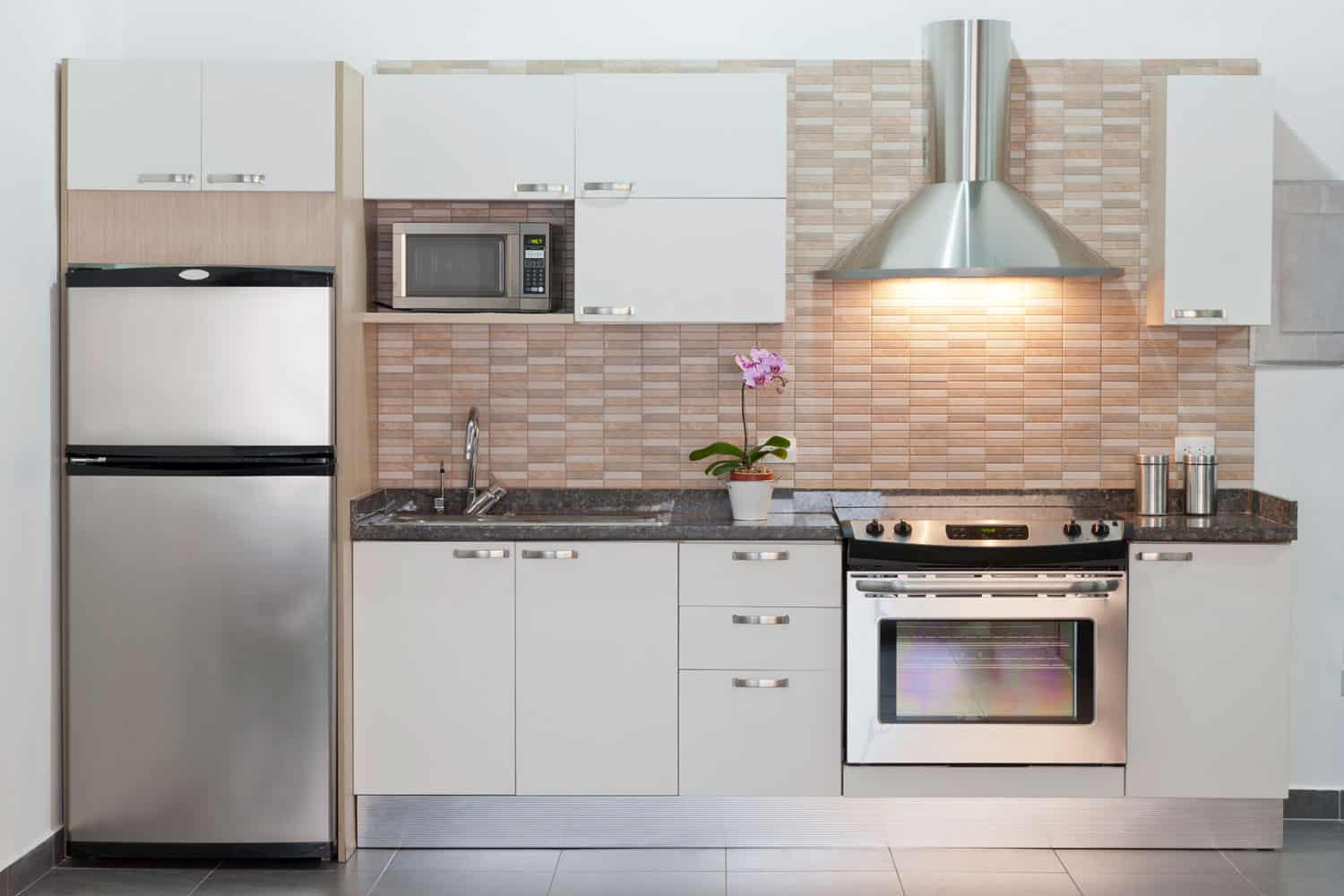
This style of a range is slid into its place between two kitchen cabinets. Its range top is designed a little differently than its freestanding counterpart, in that the top will overlap slightly onto the tops of the adjoining counters.
Advantages
This type of range has a more sleek design, making for a seamless look in your kitchen. The overlapping cooktop prevents spills from getting in between your range and your kitchen cabinets, making cleanup easier and making removing the appliance unnecessary for deep cleaning.
This design works best for kitchen islands since slide-in ranges have no back guard.
Disadvantages
The demand for this style of range has contributed to the prices being driven up. The construction and design also make this range a more expensive choice than the freestanding ones.
While the absence of a back guard has its advantages, a lack of one will require extra expense if this type of range is set against a wall. The back guard works to protect the wall from grease splashes. Should you install this range against a wall, you'll most likely need to have a tile backsplash installed on the wall so that it doesn't get damaged.
If you're replacing a freestanding model with a slide-in, you'll need to take some additional steps if this appliance is set against a wall. Slide-ins are not meant to be placed flush against a back wall, so you'll have at least a two-inch gap of wrap-around countertop to install behind the range.
Click here to see this model slide-in range on Amazon.
Freestanding ranges
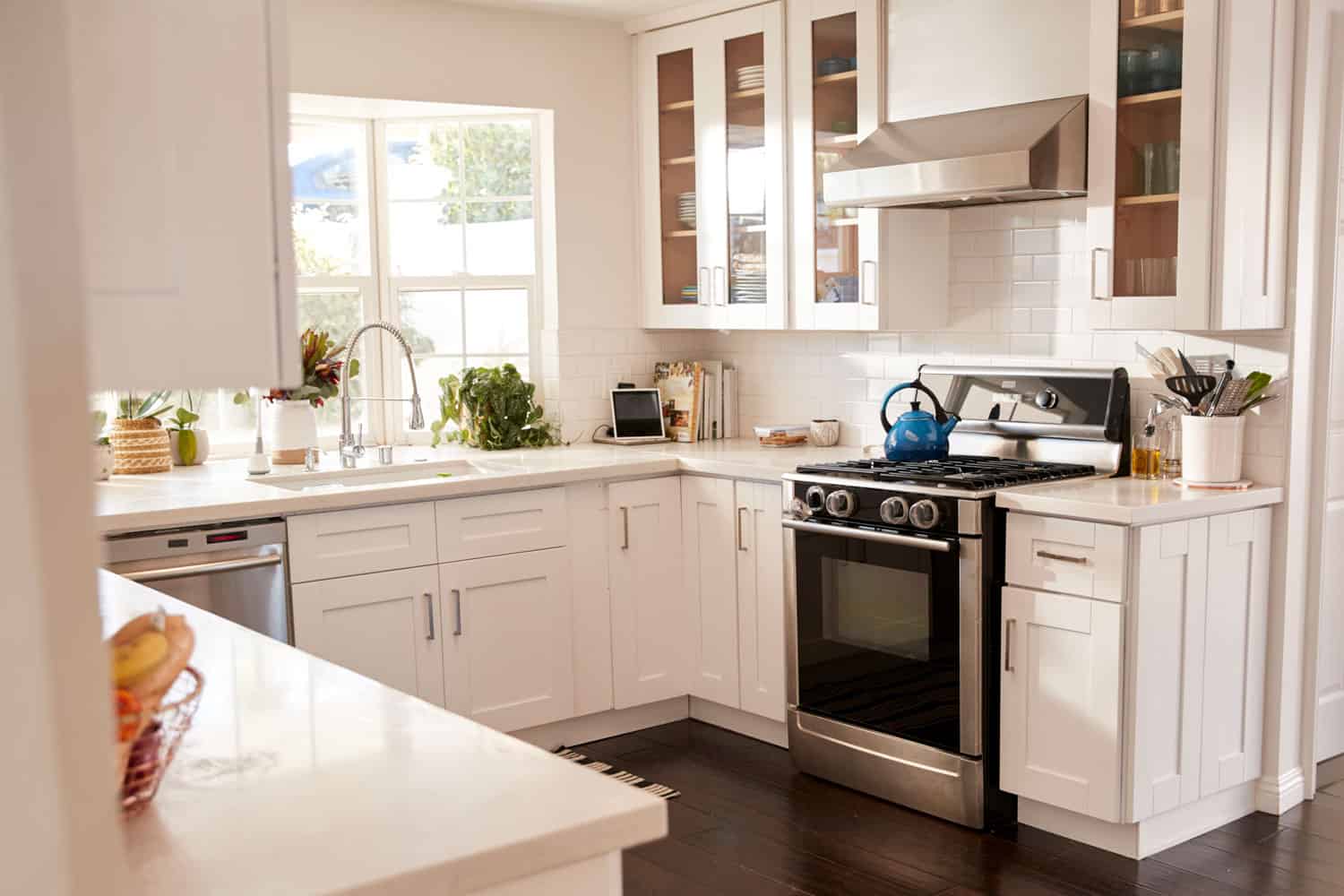
This style of range is more versatile on where it can be placed. While it can be set in between your kitchen cabinets with no problem, it is designed to be set in place apart from any fixture.
Advantages
The flexibility of its location in your kitchen is a definite plus. Not all kitchens are designed to have a range set in between cabinets, and not all of them are equipped with kitchen islands. Being able to set this appliance apart from the cabinets makes it a popular choice.
The cost of a freestanding range is also an attribute. Choosing this style of range can save you upwards of twenty percent. These ranges also come with back guards, so that you won't need to install a backsplash behind them. They can also be placed flush against any wall.
Disadvantages
If you have a kitchen island, your freestanding range won't look right inside of it. The back guard is meant to sit against a wall. The way it protrudes from the cooktop will look out of place within the island.
If you're wanting your appliances to blend in, a freestanding range probably isn't a good choice. Even when installed between two cabinets, ranges of this style stand out quite a bit.
There is no cooktop overlap with your adjacent countertops with freestanding ranges. This means that liquids and food scraps can easily be spilled in between the appliance and the cabinets. In order to prevent possible pest infestation, you'll want to clean between the range and the cabinets frequently. This requires moving the range from its place and adds extra time to your kitchen chores.
Click here to see this model freestanding range on Amazon.
Why are slide-in ranges more expensive than freestanding ranges?
Slide-in ranges have a more sleek design, which makes them the most popular choice of range for total kitchen remodeling. The demand alone for this range style has driven up the cost in recent years.
The design itself also contributes to the higher cost. On a freestanding range, the controls are located on the back guard, safely away from the direct heat of the cooktop and the oven. With a slide-in, there is no back guard; the controls are directly on the top of the unit, in front of the cooktop. This exposure to heat means that the controls have to be specifically engineered to withstand higher temperatures.
What's the difference between a drop-in and slide-in range?
Many consumers believe that slide-in ranges and drop-in models are interchangeable. While they do share some similarities, there is one difference that sets these two styles far apart when it comes to remodeling your kitchen.
Drop-in ranges became popular in the 1940s and 1950s, during a large boom in suburban home construction. This type of range doesn't have a bottom storage space, as slide-ins and freestanding ranges do. This makes the height much shorter by comparison.
In order to accommodate the difference in height between the countertops and the appliance, custom cabinetry is required. This extra cabinet sits on the ground between two adjoining cabinets, and the drop-in range is gently placed on top of it. The bottom cabinet then serves as the storage area that would normally be found with a slide-in or freestanding range.
This difference makes the drop-in ranges less popular than their counterparts. The vast majority of the time, consumers will select a drop-in range when they are ready to replace an existing drop-in range. Replacing a freestanding range or a slide-in range with a drop-in model requires extra labor, due to custom cabinetry being made necessary. The additional cost and hassle of this is something that most people tend to avoid.
How far should a range be from a wall?
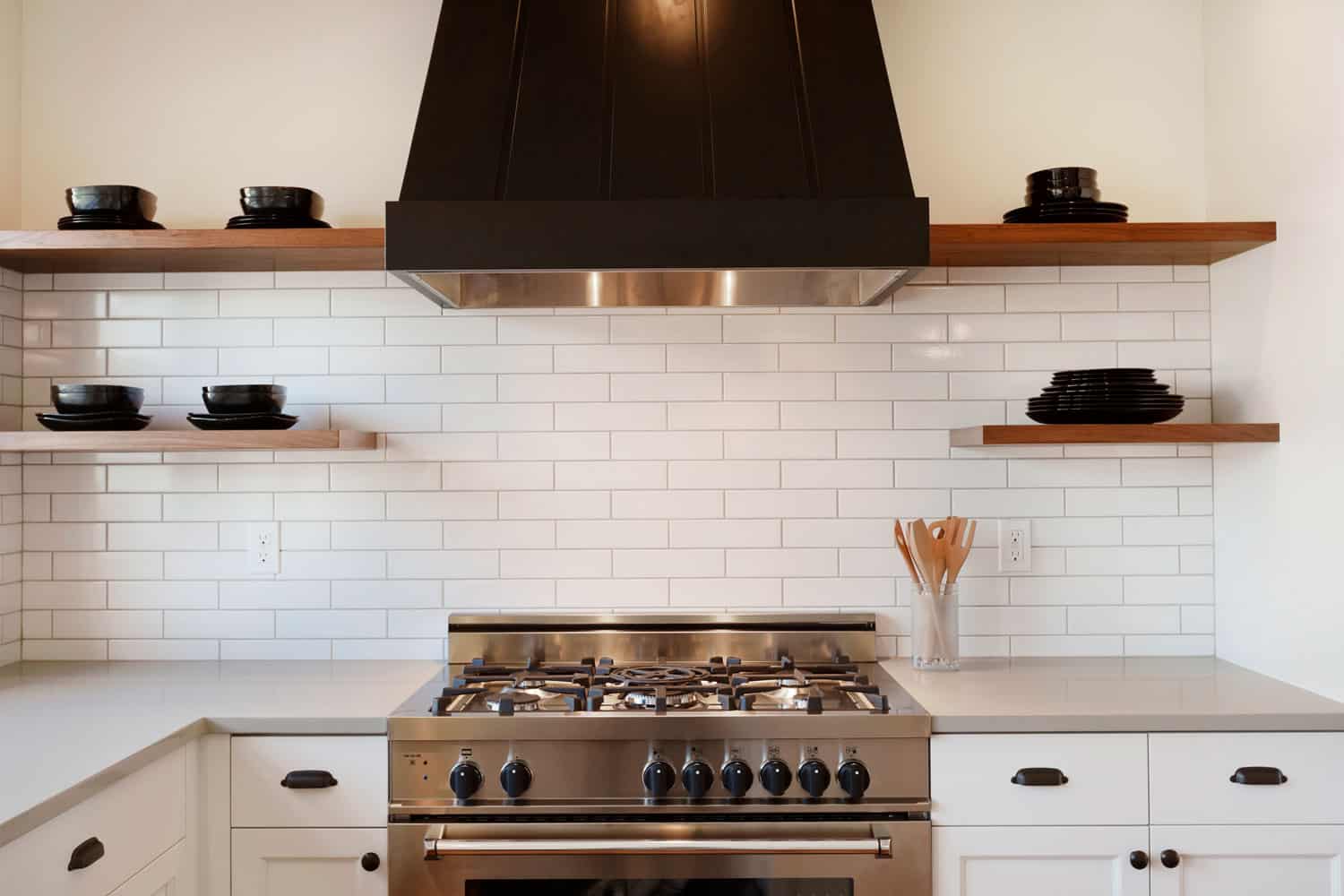
While either type of range is safe with a zero inch clearance from the adjoining cabinets, it's recommended that you leave adequate space between the edge of the cooktop and any sidewall. The minimum clearance between the two is 6 inches for safety, but the more clearance you have, the more countertop room you'll have for cooking and storing cooking utensils.
The back wall and your slide-in range should have a minimum clearance of one inch when it is installed. Most models will come with metal stripping to be placed across the back in the gap between the two countertops. In many instances, you'll need to fill this gap by other means.
Freestanding ranges are constructed to fit flush against your back wall with no issues.
If you want to know more about proper spacing in your kitchen, check out this post: How Much Space Between Stove And Cabinet?
Should the countertop be flush with the stove-top?
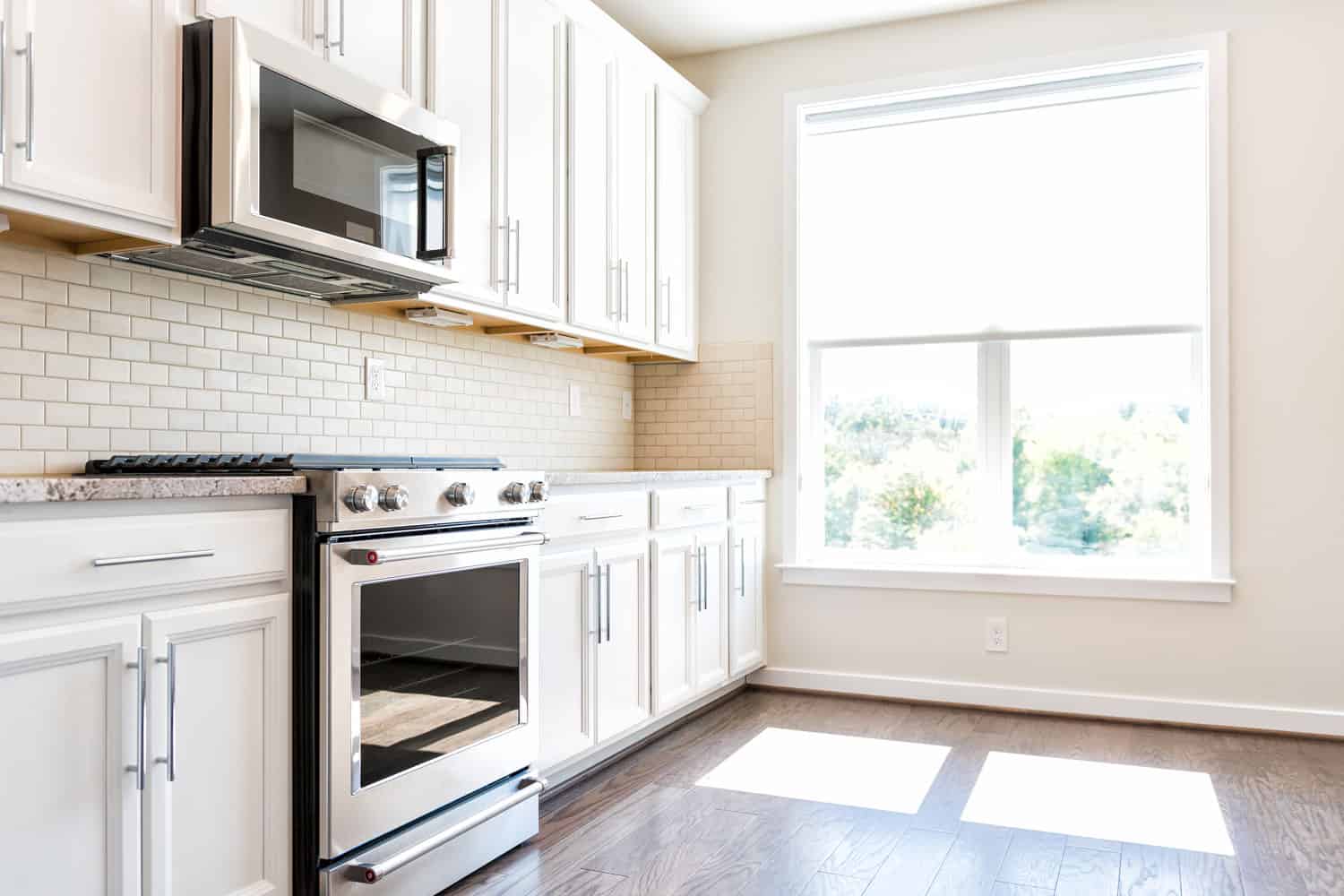
This will depend on the type of range that you choose:
With a slide-in range, you'll have to have the countertop set slightly lower than the cooktop. As we mentioned earlier in this post, slide-in ranges are built to overlap the adjoining countertops. This feature avoids spills from seeping in between the range and the cabinets.
With a freestanding range, standard cabinet size will be, on average, an inch and a half shorter than the average range height.
In Closing
Now you know the differences between slide-in ranges and freestanding models. While both range styles have their distinct advantages, the one you select will depend upon where you would like to place the appliance in your kitchen.
There is a significant difference in the prices of slide-in ranges and freestanding ones. This is due partially to demand. It's also due to the way slide-in ranges have to be constructed to withstand more direct heat from the oven and the cooktop.
Knowing the differences between these two range types is important. You should be fully aware of the pros and cons of each so that you are certain of which style best suits your kitchen, prior to purchasing!
If you found this post on kitchen ranges to be helpful, we believe you may enjoy reading the following posts about kitchen appliances:
How Long Does A Dishwasher Run?
How Tall Is A Refrigerator On Average?



